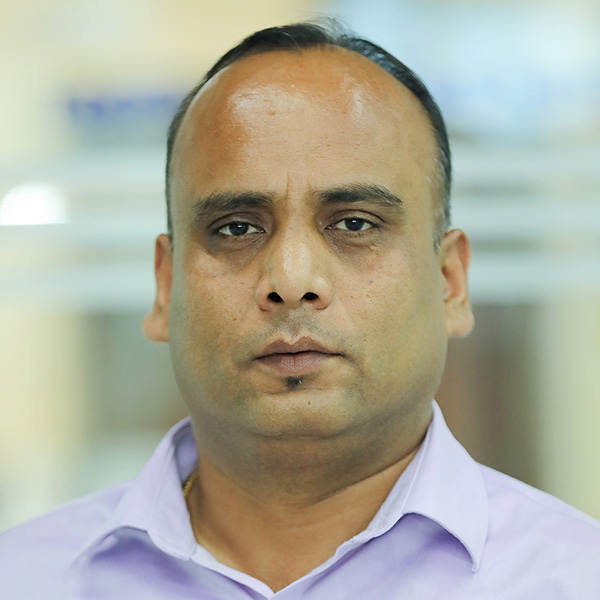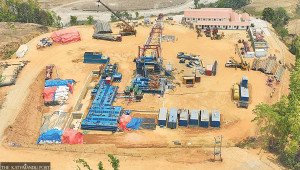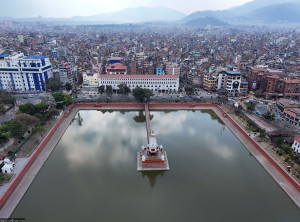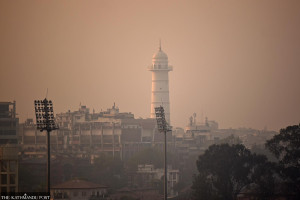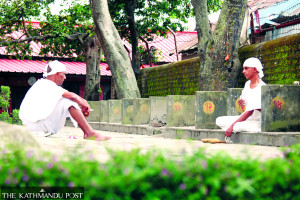National
Indian foreign secretary to visit Nepal in sign of ties getting back on track
The visit later this month, after visits of India’s intelligence chief and army chief, is expected to pave the way for Foreign Minister Gyawali’s trip to India in December.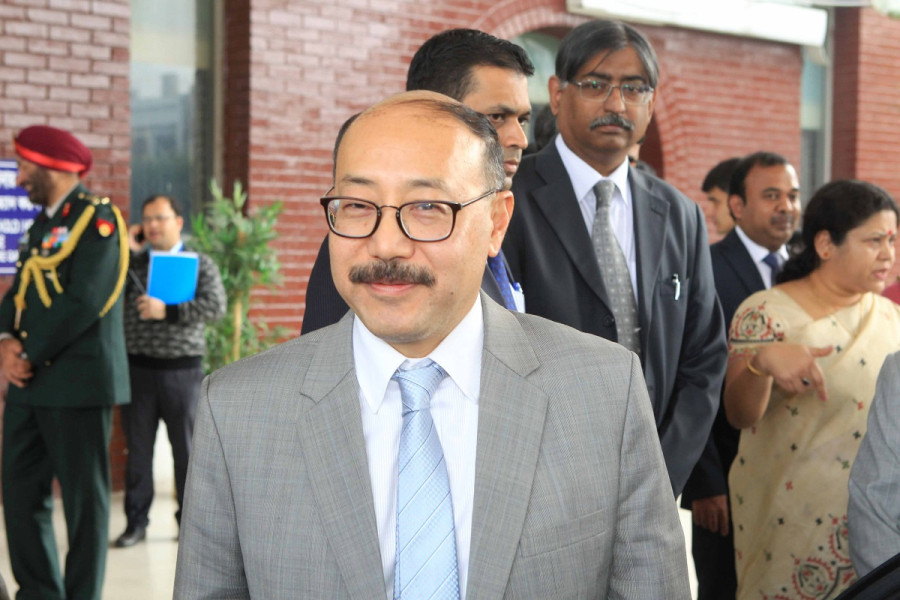
Anil Giri
In a bid to mend ties with Nepal that hit rock bottom since it published a map incorporating Nepali territory as part of Indian territory last November, New Delhi is sending its top diplomat to Kathmandu later this month.
Although the Ministry of Foreign Affairs is tight-lipped about the visit, sources familiar with the development said that Indian Foreign Secretary Harsh Vardhan Shringla is expected to visit Kathmandu on November 26-27.
“Both sides wish for exchange of such visits,” said Sewa Adhikari, spokesperson for the Ministry of Foreign Affairs. “We are not in a state to say anything about the visit right now.”
An announcement is expected in a couple of days once the schedule of the visit, his meetings and the agenda for discussion are finalised.
If everything goes as planned, the Ministry of External Affairs of India will announce the visit during its weekly press briefing on Thursday in New Delhi, said an official at the Indian Embassy.
A simultaneous announcement by the Ministry of Foreign Affairs is expected in Kathmandu, as per tradition.
“As both sides are looking forward to exchanging high-level visits as the way forward in our bilateral ties, there is enormous wish and will to exchange visits at different levels,” said the Indian embassy official. “The upcoming visit of Indian foreign secretary is part of that exercise.”
The visit would come after the three-day visit of Indian Army chief Manoj Mukunda Naravane, the first high ranking Indian official to visit Nepal in a year, last week to be conferred the title of the honorary general of Nepal Army.
During Indian foreign secretary’s visit, high on the agenda will be the way forward to resolving the ongoing border row over Kalapani, Lipulekh and Limpyadhura in northwestern Nepal, among others.
After New Delhi published a new political map last November, India’s Defence Minister Rajnath Singh inaugurated a road via Lipulekh that links India with China’s Tibet.
Ties between Kathmandu and New Delhi have remained frosty since.
Even though both sides have expressed their interests to hold diplomatic talks to address the issue, nothing concrete has taken place so far.
“The visit is not explicitly for boundary talks. This is an introduction and familiarisation trip of the Indian foreign secretary where all issues will figure,” said a Nepali diplomat on condition of anonymity. “This visit aims to build confidence where both sides will have an opportunity to take the bilateral ties towards normalcy.”
According to two officials at the Ministry of Foreign Affairs and the Indian Embassy official, Shringla’s visit is expected to pave the way for visit of Foreign Minister Pradeep Gyawali to New Delhi in December where both sides are planning to hold the sixth meeting of Nepal-India Joint Commission at the foreign minister level, the highest level bilateral mechanism between Nepal and India.
Experts say that the series of high-level visits from New Delhi to Kathmandu within one month shows that India wants to regain its foothold in Nepal and that Nepal is very much on India’s strategic and security radar and its desire to maintain its sphere of influence in the Himalayan region remains intact.
“Initially, after the boundary dispute surfaced, India tried to isolate Nepal to some extent but later realised that Nepal could tilt towards China or any other country if it is continuously disengaged with Kathmandu,” Rupak Sapkota, deputy executive director at the Institute of Foreign Affairs, a think-tank, told the Post.
According to him, India feared losing its grip on Nepal because the United States and China have increased their engagements in Kathmandu.
“The message that India wants to convey by sending its foreign secretary following visits by top officials of its security and intelligence apparatuses is that it is engaging with Nepal at multiple layers,” said Sharma.
Last month Samant Goel, the chief of India’s external intelligence agency Research & Analysis Wing, met Prime Minister KP Sharma Oli.
The meeting had drawn widespread criticism, with many saying Oli not only breached the diplomatic norms by meeting the Indian spy but also invited questions against his nationalisic stance.
“It was during Goel’s visit that both sides agreed to resume high-level visits,” a ruling party leader, who is close to the Oli camp in the party, told the Post.
According to two senior officials at the Foreign Ministry, Shringla, who took charge as India’s foreign secretary in December, was supposed to visit Nepal much earlier but the Covid-9 pandemic and the border dispute pushed back the visit.
“There is a tradition in India that the new Indian foreign secretary, after taking office, visits countries of the region and this is part of such visits,” a foreign ministry official told the Post on condition of anonymity.
In a bid to engage with New Delhi following the boundary dispute, Prime Minister Oli had started using both official and unofficial channels to reach out to the Indian establishment.
Oli on August 15 had taken India’s Independence Day as an opportunity to hold talks with his counterpart Narendra Modi and congratulated him and the people of India.
Bishnu Raj Uprety, executive director of Policy Research Institute under the aegis of the government, said that the resumption of high-level visits shows Nepal remains in the strategic priority of India and is likely to engage with the country in multiple areas.
“It looks like India, due to geo-political reasons, is engaging with countries in the region and improving ties with countries in South Asia,” said Uprety.
“It must have realised the meaning, value and support of neighbouring countries in its larger strategic ambitions. We can say that India is pursuing a different path now. It has no alternative but to engage with us.”




 25.53°C Kathmandu
25.53°C Kathmandu